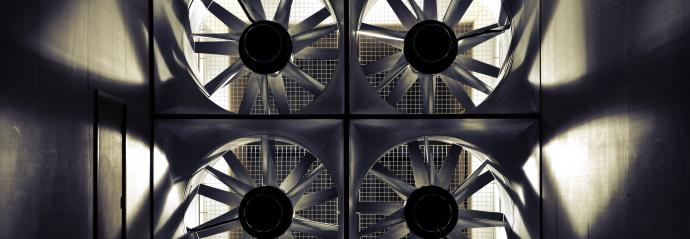
Discover the Aerodynamic Features of Cycling Kits
Share
The Power of Aerodynamics: How Cycling Kits Save Watts and Improve Performance
When it comes to competitive cycling, every watt counts. Cyclists are always looking for ways to increase their efficiency, reduce drag, and ultimately save energy while riding faster. One key area that has seen huge improvements in recent years is the design of cycling kits. From the cut of the jersey to the fit of the sleeves, the aerodynamic features of a cycling kit can have a profound effect on your performance. But just how much energy can you save by optimizing your kit, and how do small design elements, like raised fabric strips on arm sleeves, contribute to drag reduction? Let’s dive into the details.
How Aerodynamics Impact Performance: The Watt Savings
Aerodynamics is a crucial factor in cycling because it directly influences drag. Drag is the force that opposes a cyclist’s motion as they ride through the air, and reducing it allows you to ride faster with less effort. On average, about 70-80% of the total resistance a cyclist faces while riding at high speeds comes from air drag. A more aerodynamic position and cycling kit can reduce this resistance, helping you save significant amounts of energy.
But just how much can you save? The answer varies depending on your kit and riding position. Some studies suggest that optimizing your cycling kit can save anywhere between 5 to 15 watts, depending on the fit, fabric, and design features. For professional cyclists, this wattage savings can mean the difference between winning and losing a race, but it can also make a notable improvement for amateur riders aiming for better efficiency.
The Effect of Riding Position
Your riding position is another key factor in reducing drag. The lower and more aerodynamic you are on the bike, the less resistance you will face. Competitive cyclists often adopt a tucked position, with their back flat and elbows bent, to minimize the surface area exposed to the wind. However, staying in this position can be uncomfortable for long periods, which is why finding the right balance between comfort and aerodynamics is key.
In fact, a significant amount of drag comes from your upper body. The more upright you are, the more air resistance you face. A lower, more horizontal position reduces the amount of wind hitting your torso and arms, saving watts in the process. But how does the kit you wear fit into this equation?
Cycling Kit Features That Save Watts
Now, let’s focus on the specific elements of a cycling kit that contribute to aerodynamics. Each feature is carefully designed to help you cut through the wind more efficiently. Here are some examples:
-
Skin-tight Fit: Loose clothing can create turbulence as air moves around you, increasing drag. A well-fitted cycling kit hugs your body and helps air flow smoothly over the surface, minimizing resistance. A tight-fitting jersey and shorts or bibs can save several watts compared to baggier alternatives.
-
Smooth Fabric: The fabric used in cycling kits plays a huge role in reducing drag. Modern kits often use materials that are specifically designed to reduce airflow turbulence. Fabrics with a smooth, slippery surface allow air to pass over your body more efficiently, helping to save watts.
-
Aerodynamic Sleeves and Leg Openings: The design of arm and leg openings is critical to reducing drag. Sleeves that end abruptly at the shoulder create drag, while sleeves that taper smoothly reduce resistance. Some kits even feature raised strip fabric, like aero sleeves or a textured pattern, that helps to channel airflow over the arms and legs in a more efficient manner.
The Raised Fabric Strip on Arm Sleeves
One of the most interesting and effective features of modern cycling kits is the raised strip fabric found on the arm sleeves. At first glance, these small textured bands might seem like a purely aesthetic choice, but they actually play a significant role in reducing drag.
The raised strips on the sleeves create small, controlled turbulences in the airflow, which reduces the larger vortexes of air that form around the cyclist’s arm. This phenomenon, known as "micro-turbulence," smooths the airflow around the body and reduces the drag caused by larger turbulent air pockets. Essentially, these small, raised fabric strips improve the boundary layer of air over the cyclist’s arms, allowing the air to stay attached to the body for longer before separating. This reduces the overall drag and saves watts.
According to studies, the raised fabric strips on cycling kits can save around 1 to 2 watts, depending on the design and speed. Though it may seem like a small improvement, when combined with other aerodynamic features, it adds up to a noticeable difference in your overall efficiency. Over a long ride or race, these savings can result in significant time reductions and improved stamina.
Conclusion: Every Watt Counts
While cycling kits might seem like a small part of your overall performance, their aerodynamic design can make a significant difference in reducing drag, saving watts, and improving your speed and efficiency. From the fit of the kit to the fabric and the positioning of the sleeves, each detail works together to create a streamlined form that allows you to ride faster with less effort.
By focusing on aerodynamics, cyclists can save anywhere from 5 to 15 watts depending on their riding position and kit design. Features like raised fabric strips on arm sleeves help reduce drag, offering small but important energy savings that add up over time. Whether you're competing at the highest level or just riding for fitness, optimizing your cycling kit can help you reach your goals more efficiently.
So, next time you gear up for a ride, remember: every watt saved is a step closer to better performance, and every detail of your cycling kit can make a difference.
